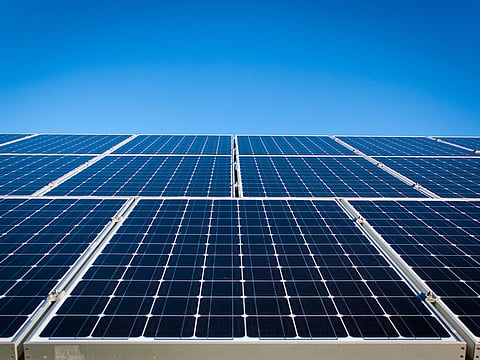Winter blackouts in the US highlight need for clean energy
Restricting Americans’ access to solar power is an expensive and dangerous proposition

When freezing temperatures in the southeastern US led to blackouts over the holidays, some pointed their fingers at clean energy. That line of attack — solar panels and wind turbines are less reliable in storms than coal and gas plants — has become predictable. But it’s dead wrong, and it’s important to understand why, to avoid allowing a canard to slow the push for cleaner air and bolder climate action.
The issue of electricity reliability is a crucial one and is rightly at the centre of energy debates. Blackouts from storms can lead to suffering and death: In western New York last month, nine residents died after power failures cut off heat to their homes. Blackouts also result in steep economic losses. Avoiding them should be a top priority.
The most common cause of blackouts, downed power lines, is also the most visible. But there is one source of energy that safeguards against that danger: rooftop solar. If a tree takes down wires, or the energy grid fails for other reasons, solar panels with batteries can help families and businesses weather a blackout.
It’s true that on-site solar is not practical for every home, but it’s viable in far more places than commonly imagined. And the main reason more homes and businesses don’t have their own solar panels is political: States and localities have made it unnecessarily difficult to obtain solar permits, and utilities have lobbied to block Americans from selling their excess power back onto the grid or force them into accepting prices far below what the utilities receive for transmitting the same units of power.
Higher bills, blackouts and pollution
As a result, the public is paying a steep cost: in higher electric bills, dangerous blackouts, harmful pollution that kills thousands of Americans every year, and changes to the climate that are making extreme weather — and the suffering that it brings — worse.
The second-largest cause of electricity outages during extreme weather is production failure. And once again, renewable energy has advantages over coal and gas in severe weather.
For starters, extreme heat and ice shut down coal and gas power plants faster than they hamper the sun and wind. During last month’s cold snap, nearly 90 per cent of the outages experienced by the nation’s largest grid operator were the result of coal and gas failures. If fossil fuels had been a backup source of power rather than the primary source, there likely would have been no power outages, or far fewer.
The holiday blackouts were an echo of coal and gas failures in Texas two years ago. During that freeze, some wind power did fail, but turbines can easily sustain cold temperatures — they work in the Arctic — if they are weatherproofed. Texas built them on the cheap and paid the price.
Another reliability advantage that renewable energy has over coal and gas during extreme weather is familiar to anyone who understands a basic principle of investing: Don’t put all the eggs in one basket. Power generated by fossil fuels is concentrated at a relatively small number of large plants. In a storm, if something goes wrong at one plant, more than a million people can lose power.
Power generated by solar and wind, on the other hand, is distributed across many more units of production that are more geographically disbursed, making production more resilient in the face of extreme weather and better able to sustain the failure of individual units.
It’s true that the sun and wind don’t shine and blow 24/7, but that’s a manageable challenge. Battery storage and other technologies will continue to advance rapidly, and power than can’t be stored can be transmitted — if the US builds the long-distance transmission lines that are needed to carry it.
For example, the demand for power peaks in Chicago after the sun sets. And when Chicago’s HVAC systems are kicking in, solar panels in the Southwest are reaching their maximum. We just need more high-speed wires to connect the two regions.
Building that grid is an expensive proposition, of course, and the Inflation Reduction Act only scratches the surface of what’s needed. But it’s imperative that transmission capacity keep pace with production capacity.
Focus on solar and wind power
Every storm or fire that knocks out fossil fuel plants is another reminder of the superiority of wind and solar in severe weather; the need to incentivise both production and transmission; the absurdity of restricting Americans from installing solar panels and selling cheaper, cleaner energy to their neighbours; and the crime of allowing elected officials to be in the pocket of an industry that is sickening our children, killing our families and putting future generations at risk.
Solar and wind power are already cheaper than coal and gas in much of the country. The faster we can build transmission capacity that will allow us to invert America’s energy mix — making solar and wind the primary source of power and fossil fuels the last resort — the more reliable our energy system will be during severe weather, the lower our monthly electric bills will be, and the healthier and safer our families and communities will be.
— Bloomberg
Michael R. Bloomberg is the founder and majority owner of Bloomberg LP, the parent company of Bloomberg News, UN. Special Envoy on Climate Ambition and Solutions, and chair of the Defence Innovation Board.
Sign up for the Daily Briefing
Get the latest news and updates straight to your inbox



